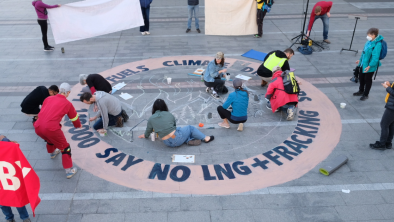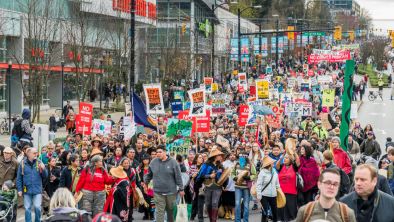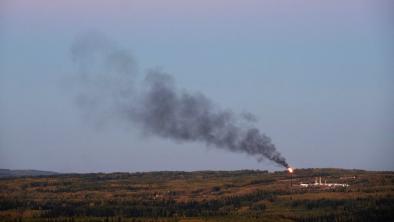It's Our Nature - Wild Times
Wednesday, November 14, 2007

November 15th, 2007 - Read Joe Foy's Wild Times column in the Watershed Sentinel as he examines the rebirth of First Nations decision-making powers.
By Joe Foy
We’d been hiking all day to reach the crest of the ridge, and now that we were on top it didn’t seem real. Around us was the great stone and ice spectacle that is the Coast Mountains of British Columbia.
We were in the headwater highlands of Melvin Creek,in the heart of St at imc (pronounced Stat lee um) territory. I was there with Ed and Will, two young St at imc fellows. We were marking out the ancient trade trail that runs through here on its way to Lost Valley then on down to Anderson Lake and the St at imc villages of Seton Portage and Shalath.
This was all part of a ten year long collaborative effort to build support for the protection of key natural areas within St at imc territory. We were aiming to protect them in the face of destructive BC government-approved industrial projects such as proposed clearcut logging in Lost Valley and the development of a giant ski-city in the Melvin Creek highlands.
This kind of collaborative work with the St at imc and other First Nations is how the Wilderness Committee and our partners in the environmental movement have worked for a very long time now. It’s why we’ve all been so successful in gaining protection for wilderness gems like Stein Valley, Gwaii Haanas, Kitlope Valley, Upper Elaho Valley resulting in a doubling of BC’s protected areas system in the past couple of decades.
Certainly the map of British Columbia has changed with all the new protected areas being added. But for many of us it’s changed in another way too. The map’s changed back to an earlier time. Boundaries follow rivers and mountain ridges, not straight lines guided by colonial era rulers. The outlines of nations on the map carry names of ancient peoples like Halkomelem, Nuu chah nulth, Kwakiutl, Nlaka’pamux, Okanagan, Ts’ilhqot’in, Secwepemc, Nuxalk, St at imc and so many others - each with their own language, history and dreams for the future.
These are nations that literally spring from the land. Their creation stories were not played out in some far off Garden of Eden in the Middle East or China or India or Europe.
Every First Nation in this part of the planet has its own creation stories that live in the very mountains, rivers and forests surrounding their villages.
And so it is entirely right, fitting, and just that First Nations’ governments be decision-makers on many matters pertaining to their people, lands and waters – even when environmental groups don’t agree with those decisions. Environment groups are not decision-makers, never have been or will be.
Our power comes from our efforts involving collaboration, research, education, and various forms of peaceful protest. We do many things to encourage a positive outcome – but we are not the deciders. That is for legitimate governments to do, including First Nations governments.
The push by the government of the Tsawwassen First Nation to remove through treaty several hundred acres of farmland from the Agricultural Land Reserve is a decision I strongly disagree with. I believe that the Tsawwassen have been maneuvered into this terribly short-sighted decision by the federal and provincial governments, intent on ramming their Gateway port and freeway expansion plans through.
And it’s not just the Tsawwassen government I disagree with. There are First Nations government approved plans for logging in endangered species habitat, cutting down some of the last remaining old growth forests and for building private river diversion power projects. I and many other environmental activists oppose these projects as well.
But you know what? Its going to be OK. Because that’s what governments do. They decide. And sometimes we don’t like their decisions. And when that happens environmental groups step up and speak out and push hard for a decision that protects the environment. That’s what we do – it’s our nature.
Joe Foy is Campaign Director for the Wilderness Committee, Canada’s largest citizen-funded membership-based wilderness preservation organization.


